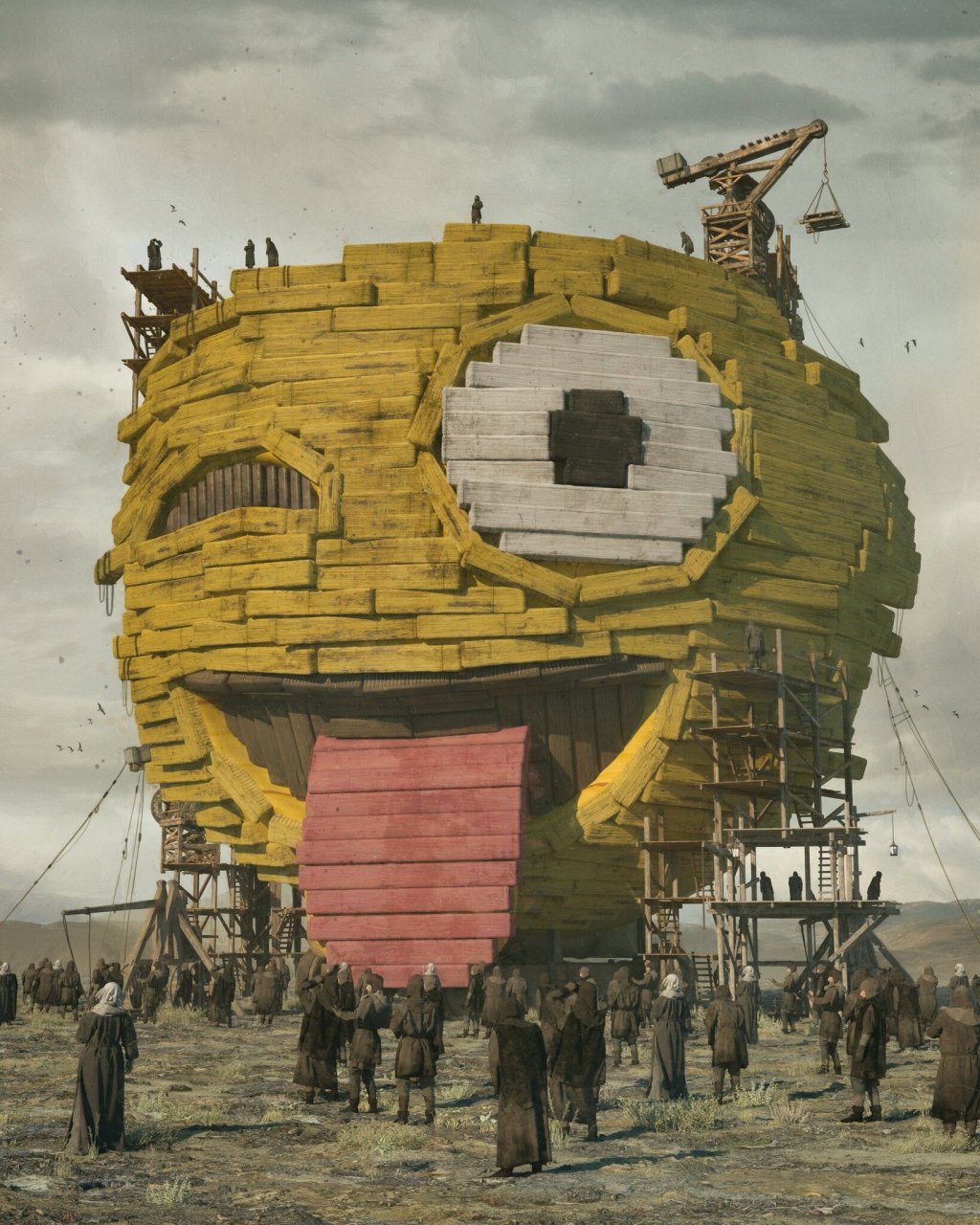Mike Winkelmann, aka Beeple, is not Roger Federer
Mike Winkelmann aka Beeple is the first artist to sell a blockchain-based artwork at a main auction house. But it’s just a jpeg file
Premise
We wrote and published what you are about to read a week before Beeple’s work Everydays—The First 5000 Days was sold by Christie’s for USD 69,346,250.00, making its author, Mike Winkelmann, the third best paid living artist, one with no museum exhibition in his CV. The name of the buyer has not yet been revealed, but a mad price such as this makes more noise than any name could possibly make. A large figure is without a doubt the most straightforward, quickest, and simplest piece of information. A sentence we read a few years ago on a toilet door of the KW Institute in Berlin during the Biennale comes to mind: “In a society that has abolished any adventure, the only adventure left is to abolish that society.” Good luck to the crypto adventurers…
Beeple the first
If the ongoing Christies’ auction of Mike Winkelmann’s (aka Beeple) artwork Everydays—The First 5000 Days were to close now, the piece would be worth more than 3.2 million dollar – an incredible price for a digital artwork. Seven days left before the end of the auction, the value of the first blockchain-based artwork at Christies is set to rise. If you have enough Ether, that is the only currency you can use to bid, and if you are toying with the idea of owning a piece of history (which history though?), you might find the following considerations helpful. Our focus will be the artistic value of Beeple’s piece, a much more reliable indicator than its skyrocketing price.

Can we talk about cryptoart as we talk about cryptocurrency?
Artworks like Beeple’s are based on non-fungible tokens (NFTs), unique digital tokens encrypted with the artist’s signature and individually identified on a blockchain. The artist entrusted this digital tool with all the information relating to the work and its possession, including the obligation to give the artist 10% of the value of the transaction at each subsequent transfer of ownership – a sort of resale right.
Everydays—The First 5000 is actually a jpg file of about 21.000 pixels each side, weighing about 320 megabytes, that is more than three times the maximum file size produced by top cameras today. The image is in turn the mosaic of 5000 images made by Beeple in 5000 days, starting from May 1, 2007. For the last 14 years, the images have been posted on the artist’s website or Instagram profile, which in the meantime has reached two million followers – all of them organic as Beeple confirmed to The Verge magazine.
Given these premises, should we really consider NFTs an artistic medium? We don’t think so, and neither does Beeple anyway (Fitc, Amsterdam, 2020). A NFT is instead the container of the information essential to the possession of the work, including the signature of its author.

Is art outside the art world still art?
Two conditions are sufficient for something to be art: it needs to be recognized as such by its maker and by someone else who might even be willing to own it in exchange of money. Two types of value come into play. The artistic value is determined by the consensus generated by the work over time. The economic value depends on the market. As intelligent investors know, the logic of supply and demand tends to temporarily underestimate or overestimate some goods based on factors that only partially have to do with the fundamental quality of those goods. This principle rules in the art market and it is sometimes called speculation.
Indeed outside art is still art, but to understand whether the economic value of an artwork matches its artistic value, we can only go back to evaluating the fundamentals of the artwork: the judgment of art institutions, galleries, critics, and collectors with proven experience. The consensus deriving from these actors is the result of a long and complex evolutionary process. No matter how big, an auction house by itself is by no means sufficient. Lasting consensus on artistic value comes from the convergence of a multiplicity of heterogeneous yet qualified voices. The rest is a fad.

Is Mike Winkelmann aka Beeple a good artist?
Not even the best-argued aesthetic judgment can answer this question with precision. What can for sure be said is that Mike Winkelmann lacks museum recognition or the support of important art galleries. He has indeed worked for large clients including Nike, Apple, Louis Vuitton, and has collaborated with established musicians such as Justin Bieber, Eminem, Janet Jackson. Yet it is unsure what this kind of success implies for the artistic value of an artwork. Will MoMA, Pompidou, M+ Hong Kong or Zeitz MOCAA [here the link to our reportage about the African museum. Ed] consider Beeple because his clients include Coca-Cola?
Everydays—The First 5000 can hardly be considered a revolutionary work, and neither can Winkelmann’s Short Films, which might be his best art yet. Everydays—The First 5000 is instead well packaged, like a song by Lady Gaga – most likely not the best musical expression of our time. The astronomical success of Beeple’s works on the platform Nifty Gateway prompts some thoughts. At least at the beginning of their career, in the case of important artists, recognition came from their peers rather than outsiders. Nothing seems further from an art informed audience than the users of Nifty Gateway. As a guilty pleasure, let’s ask a rhetorical question: is there a tennis player better than Roger Federer out there in the universe who has never played a tournament?

Conclusion
Mike Winkelmann aka Beeple is probably no worse artist than many of those in the art world today. Only a few of these artists will stand the test of time, and likely Beeple will not be among them, especially considering that recognition by experts and peers just isn’t there. Needless to say, art and the art market are two very distinct things, as Wade Guyton told us a few years ago. No auction house by itself can change the art world as we know it, and no record price should be seen as a sign of quality.
March 19, 2021
